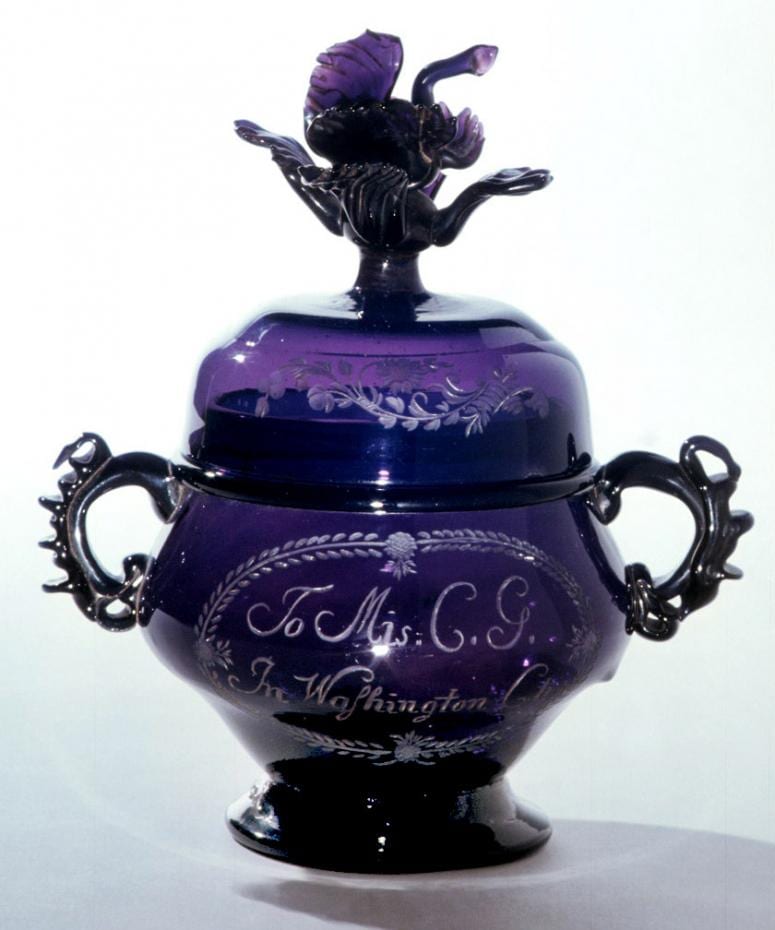
Henry Francis du Pont began collecting American glass early in his career, and by 1924 his private collection included more than 70 pieces. As well as selecting objects for their color and design, du Pont strove to acquire types of glass known, from historical records and archaeological evidence, to have been in use in early America. Winterthur continues this practice, and today, the collection consists of about 4,000 glass objects.
The work of important early American manufacturers is unusually well-represented and features glass by John Frederick Amelung (New Bremen, Maryland), Caspar Wistar (Wistarburgh, New Jersey), and Henry Williem Steigel (Manheim, Pennsylvania). Among glassware that was produced on a larger scale and would have been more broadly available are Midwestern and New England types. Up-scale items among these range from wineglasses and decanters to flower and celery vases, milk jugs, and sugar bowls. More everyday forms, including milk pans and an impressive group of historical-subject pocket flasks, are also included.
English and Continental glassware fill out the collection and provide a broader sense of what was available to American consumers from the late 1600s through the early 1800s. Such objects comprised most of the elegant table glassware found in wealthy and middle-class American homes. Most of Winterthur’s glassware, displayed in the house, is available for viewing during tours.
Books about Winterthur Glass
Palmer, Arlene. Glass in Early America: Selections from the Henry Francis du Pont Winterthur Museum. Winterthur, Del.: Henry Francis du Pont Winterthur Museum, 1993.
Top Image: Sugar bowl. Made by John Frederick Amelung, New Bremen Glassmanufactory, Frederick, Maryland; about 1790. Nonlead glass. Height: 8” (20.4 cm). 1959.3011